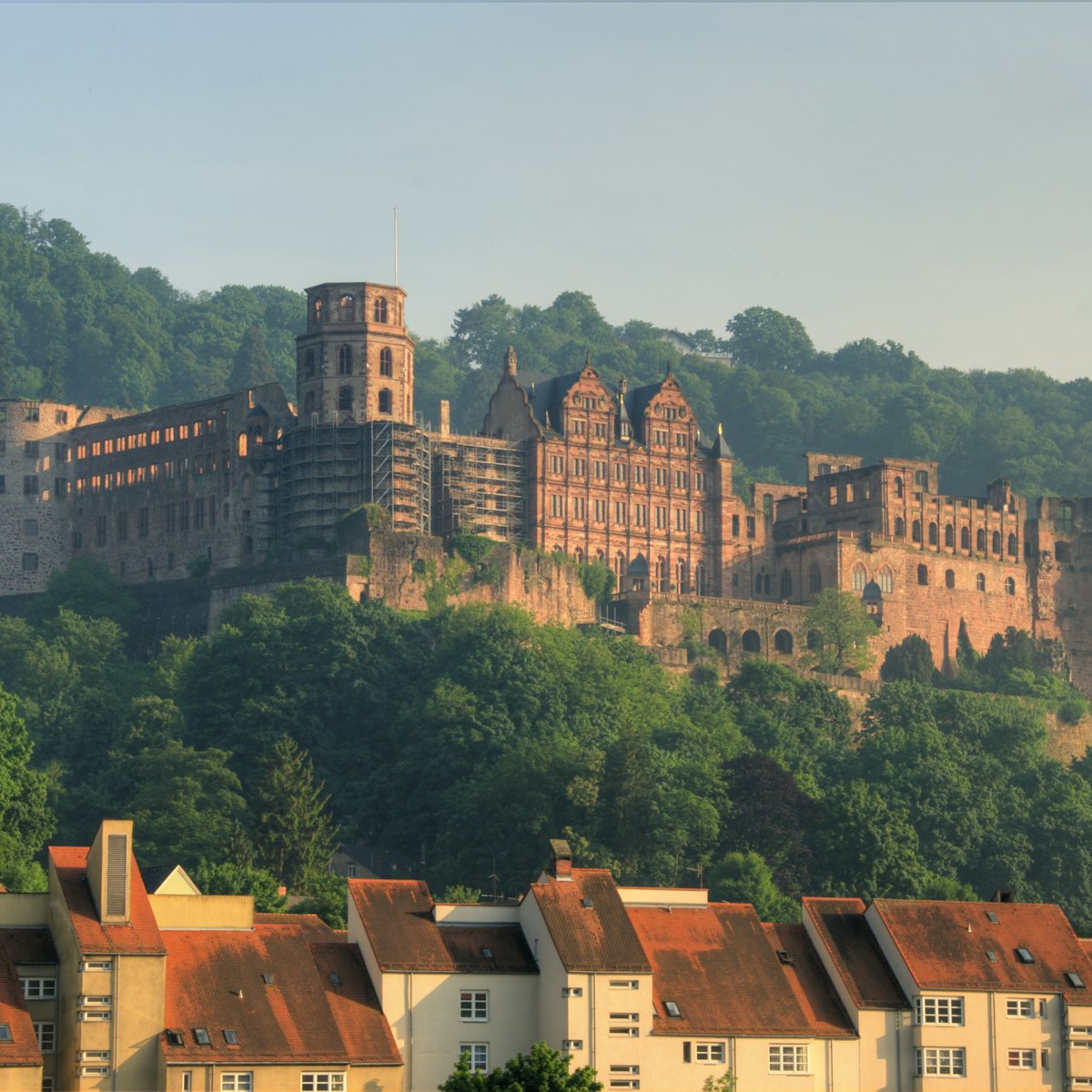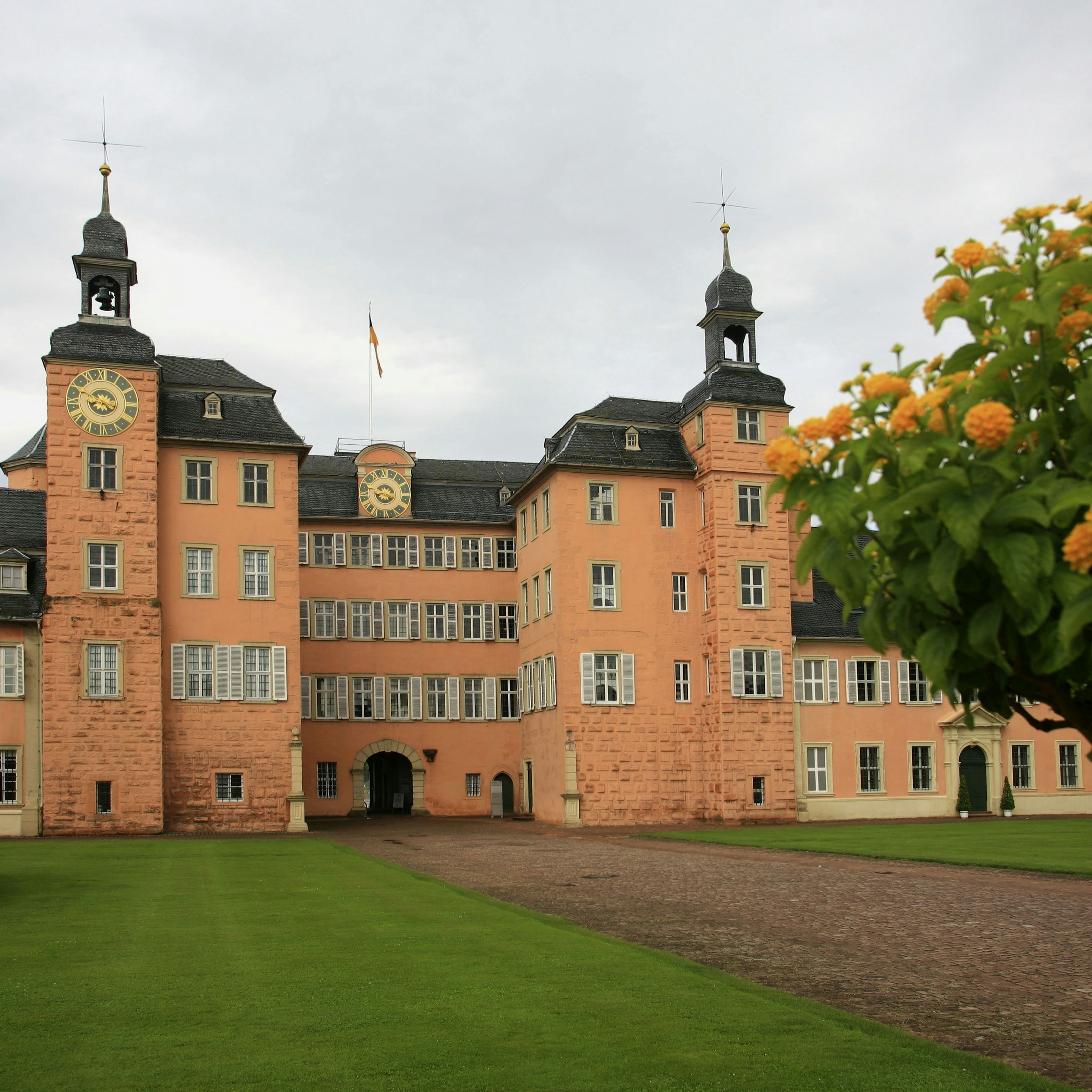The city-run Palatinate Museum chronicles Heidelberg’s eventful past, particularly the Roman period – exhibits include original wood beams from a 3rd-century bridge. To learn about really ancient history, check out the replica of the 600,000-year-old jawbone of Homo heidelbergensis (Heidelberg Man), unearthed some 18km southeast in 1907 (the original is stored at the university’s palaeontology institute). Most of the museum's late 15th- to 20th-century paintings and sculptures are by artists from or associated with the region.
Kurpfälzisches Museum
Heidelberg
Lonely Planet's must-see attractions

0.57 MILES
Towering over the Altstadt, Heidelberg’s ruined Renaissance castle cuts a romantic figure, especially across the Neckar River when illuminated at night…

13.47 MILES
Begun in 1030 by Emperor Konrad II of the Salian dynasty, this extraordinary Romanesque cathedral has been a Unesco World Heritage Site since 1981. Its…

8.5 MILES
The hallowed HockenheimRing, 22km southwest of Heidelberg just east of the A6, has three circuits and stands accommodating up to 120,000 fans. It hosts…

11.94 MILES
Mannheim’s most famous sight is the yellow and red sandstone Schloss, Germany’s largest baroque palace. Now occupied by the University of Mannheim, the…

27.06 MILES
Atop a forested Pfälzerwald hill 6km southwest of the centre, this 'cradle of German democracy' is where idealistic locals, Polish refugees and French…

13.58 MILES
A block south of the Rathaus, the ‘Jews’ Courtyard’ is one of the most important medieval Jewish sites in Germany: the remains of a Romanesque-style…

13.82 MILES
The 55m-high, 13th-century Altpörtel, the city’s western gate, is the only remaining part of the town wall. Its clock dates from 1761. Climbing 154 steps…

6.19 MILES
The enchanting gardens of Schloss Schwetzingen, the grand baroque-style summer residence of Prince-Elector Carl Theodor (1724–1799), are wonderful for a…
Nearby Heidelberg attractions
0.13 MILES
Established in 1386 by Count Palatinate Ruprecht I, Germany’s oldest and most prestigious university comprises 12 faculties with 30,000 German and…
0.15 MILES
The three-room University Museum, inside the Alte Universität building of Ruprecht-Karls-Universität, has paintings, portraits, documents and photos from…
0.17 MILES
From 1823 to 1914, students convicted of misdeeds such as public inebriation, loud nocturnal singing, freeing the local pigs or duelling were sent to this…
0.18 MILES
The University Library was built in massive Wilhelmian style from 1901 to 1905. Upstairs you can see rare books and prints from its superb collections in…
0.22 MILES
Rising above an attractive square just east of Universitätsplatz, the red-sandstone Jesuits’ church, with an all-white interior, is a fine example of 18th…
0.26 MILES
The Neckar’s grassy northern bank between Theodor-Heuss-Brücke and Ernst-Walz-Brücke is a favourite student hang-out when the weather is warm.
0.31 MILES
For bird’s-eye views, climb the 208 stairs to the top of the tower of Heidelberg's famous church, constructed between 1398 and 1441. It was shared by…
0.35 MILES
In the middle of the Marktplatz is the Hercules fountain; in medieval times petty criminals were chained to it and left to face the populace.